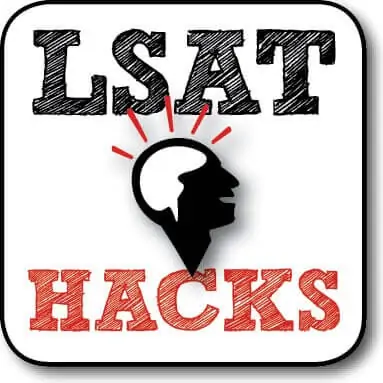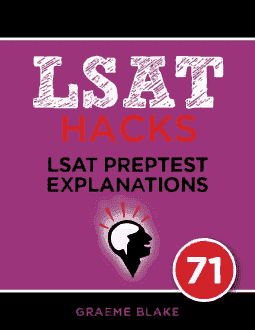This is an explanation for passage 4 of LSAT preptest 71, the December 2013 LSAT. This passage is about mirrors. It presents the field-of-sight explanation and the front-to-back explanation of how mirrors work.
This section has paragraph summaries and an analysis of the passage, links to the explanations for the questions are below.
Paragraph Summaries
- Description of the field-of-sight explanation for mirrors.
- Some physicists offer a persuasive, but flawed, front-to-back reversal explanation.
- This front-to-back explanation is persuasive because it seems natural, but we can’t trust our senses with mirrors. They are 2-d, but simulate 3-d.
- Scientists like the front-to-back explanation because they can separate the observer from the event. But in this case there is no event (reflection) without an observer.
Analysis
You don’t necessarily need to know details in this passage. For example, I forgot all the details in paragraph 1. I just know that’s where the field-of-sight explanation is.
In fact, as I write this explanation, I don’t remember any of the details from paragraphs two and three. So what do I know? I took note of the structural elements of the argument. I remember everything I wrote in the paragraph summaries above, and I know what the author is saying. If a question asks about the details, I know where to find them, because I know the organization of the passage.
The author’s main point is that mirrors are deceiving. We should explain them in terms of what actually happens (field-of-sight explanation) rather than what makes intuitive sense (front-to-back explanation).
When we look at a mirror, we imagine 3-d objects. In fact, our eyes focus on mirrors as if we were looking at a 3-d scene, rather than a 2-d object (last sentence of paragraph 3).
But mirrors are not 3-d. They are flat sheets of glass. There is no object inside them which is the reverse of real world objects. Instead, something happens with light (spare me the details, they’re in paragraph 1!) which reverses our vision left-to-right, making the image reversed.
Paragraphs 2-4 are devoted to showing that the front-to-back theory of mirrors is wrong. The front-to-back theory is based on our intuitions. When we look into a mirror, it looks like the objects are reversed from front-to-back.
This theory makes sense in terms of how we imagine mirror objects in our heads (our “mental constructs” of mirror objects). But this theory gives a false impression of what happens in the real world. Lines 34-36 say that we take what we see in mirrors and imagine it wrong in our heads.
Many answers talk about mental constructs, so the test-makers assume you will find them confusing. It’s a fancy term for “stuff you imagine”. We don’t see the real world. Light hits our eyes, and our brains turn that into mental images. These images aren’t real, and what you see may not be what someone else sees.
However, in most cases, our mental images of the world give us a good idea of what the world is actually like. But in the case of mirrors, our mental constructs are inaccurate. A mirror is just a flat piece of glass. But we see it as a 3-d scene.
The final paragraph explains another reason why the front-to-back theory is popular. Scientists like to separate objects and observers.
This doesn’t work with mirrors. If no one looks into a mirror, there is nothing to see. The phenomenon of a reflected object is only there if an observer can see the object.
Structural words are extremely important on reading comprehension. They let you skip over the details and focus on a few key points. When you review RC passages, highlight structural words to train yourself to process them automatically. Here are some examples:
- however (1st sentence of paragraph 2)
- it is clearly (paragraph 2)
- yet (paragraph 2)
- however (paragraph 3)
- note (paragraph 3)
- In addition to (paragraph 4)
- However (paragraph 4)
This passage has an unusually high number of structural words. That means the questions will test whether you understand the author’s purpose. I’m this paragraph after having written explanations for all the questions on this passage, and almost all of the questions test overall comprehension, not details.
Frankly, these questions are easy if you understand the passage, but almost impossible if you don’t. In fact, if you still don’t understand the passage, then I fear my explanations may be rather difficult to follow, because I have to use words such as “front-to-back explanation”, as that is what this passage is about.
I recommend two steps if you found this passage difficult:
- Reread the passage, and other hard science passages, until they start to make some sense.
- Go to your local library, and get 20-30 back issues of the economist. Start reading the science sections.
The Economist science section is about three pages long. It’s well written, yet not dumbed down, so it matches the style of LSAT reading comprehension science passages.

Want a free Reading Comp lesson?
Get a free sample of the Reading Comprehension Mastery Seminar. Learn tips for solving RC questions


Leave a Reply